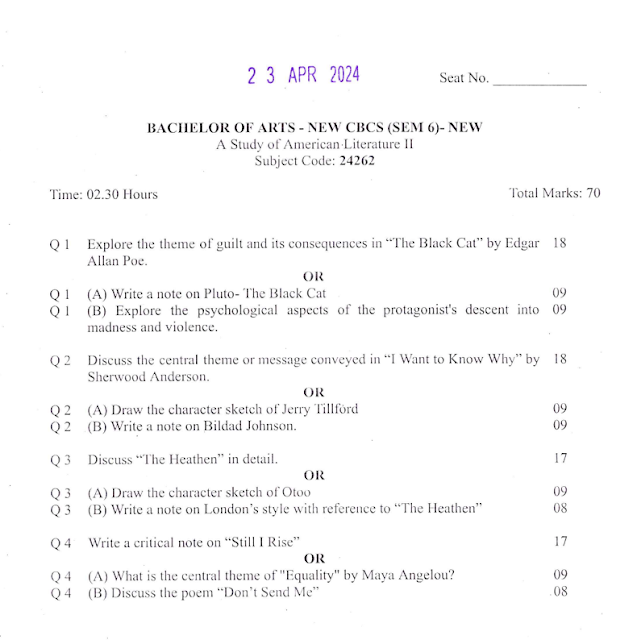'To the Negro-American Soldiers'
by Leopold Sedar Senghor
About the Poet: Leopold Sedar Senghor
- He was a Senegalese poet, philosopher, and politician who served as the first president of Senegal from 1960 to 1980.
- He was a leading proponent of the Negritude movement, which celebrated Black African culture, values, and aesthetics.
- As a poet, he wrote influential works such as "Hosties Noires" (Black Hosties) and "Chants d'Ombre" (Songs of Shadow) that explored African identity and the colonial experience.
- He played a key role in negotiating Senegal's independence from France in 1960 after serving in the French national assembly.
- As Senegal's first president after independence, he promoted economic and social policies rooted in African Socialism and democracy.
- He advocated for African unity and helped establish important regional organizations like the Organization of African Unity (now African Union).
- He received the Stalin Peace Prize in 1963 and was elected to the French Academy in 1983 in recognition of his literary and intellectual achievements.
- His presidency was marked by the promotion of cultural renaissance, economic development plans, and a commitment to democracy despite periods of one-party rule.
Poem: 'To the Negro-American Soldiers'
"To the Negro-American Soldiers" is a poem written by Leopold Sedar Senghor during World War II in 1942.
Theme:
The central theme is an expression of solidarity with African-American soldiers fighting in World War II against Nazi Germany. Senghor sees their struggle as linked to the broader fight against racism, colonialism, and the quest for freedom and human dignity for Black people everywhere.
Tone:
The tone is one of intense pride, admiration, and gratitude toward the African-American soldiers. Senghor adopts a celebratory, almost mythical tone in portraying their bravery and sacrifices.
Imagery:
Senghor employs powerful imagery rooted in African cultural symbols and imagery of warfare:
- "Bronzed men" - refers to their skin color with nobility
- "Burned your Chests with the Blood of your Heroic Hearts" - visceral image of sacrifice
- "Let loose the martial airs of your savage trompe" - African war horns calling to battle
Structure:
The poem has a structured rhyme scheme and rhythm that builds a sense of momentum and intensity as it progresses. The lines grow shorter toward the end, adding emotional punch.
Messages:
- Honoring the African-American soldiers as heroes fighting for liberty
- Connecting their struggle to the broader Black liberation movement
- Invoking African warrior ideals of strength, resistance, and defiance
- Affirming a shared racial identity and destiny between Africans and the Black diaspora
It is a passionate anti-colonial, anti-racist poem that mythologizes the African-American soldiers as almost transcendent warriors for the cause of Black liberation worldwide during World War II.
Stanza-by-stanza analysis:
Stanza 1:
"Men of bronze who burned your chests with the Blood of your Heroic HeartsWho let loose the martial airs of your savage trompes..."
Senghor addresses the African-American soldiers directly, describing them as "men of bronze" which evokes their skin color and a sense of nobility.
The "blood of your heroic hearts" is a visceral image celebrating their courage and sacrifices in battle.
The "martial airs" and "savage trompes" refer to African war horns, connecting the soldiers to an ancestral African warrior spirit.
Stanza 2:
"Ah! our brothers of the Soudan, children of Guinen and Bantou,With massive shoulders outlined under khaki..."
Senghor identifies the African roots and lineages of the soldiers, from Sudan, Guinea, and the Bantu peoples.
The "massive shoulders" under their military uniforms evokes a sense of physical strength and presence.
Stanza 3:
"You have for ancestors the builders of indestructible monuments,The sculptors of holy Bronzes..."
He links them to the prestigious cultural heritage of ancient African civilizations, the "builders" and "sculptors" of great monuments and art.
This connects their struggle to the legacy of African creativity, spirituality, and perseverance.
Stanza 4:
"You have taught the World that the Past...Is not Renunciation but Promise"
The shortest stanza makes a profound statement that through their heroic actions, the soldiers have shown the world that Africa's past is not something to renounce but a "Promise" - a rich wellspring of pride and inspiration for the future.
Senghor constructs an extremely admiring and empowering portrayal of the African-American soldiers through vivid cultural imagery, connecting them to an idealized vision of African heritage, warrior spirit, and world-historical importance in their fight against oppression.
Conclusion:
Leopold Sedar Senghor's poem "To the Negro-American Soldiers" is a powerful tribute that elevates the African-American soldiers of World War II to an almost mythical status as warriors and representatives of the entire African diaspora's struggle for liberation.
Some key points in the conclusion:
- Senghor directly addresses the soldiers, praising their heroic sacrifices and drawing parallels to legendary African warriors through vivid cultural imagery of "bronze men," the "blood of heroic hearts," and African war horns.
- He connects them to the prestigious legacy of great African civilizations - the "builders of indestructible monuments" and "sculptors of holy bronzes" - linking their fight to a long tradition of African resistance and creativity.
- In the culminating lines, Senghor declares that through their brave actions, the soldiers have "taught the World" that Africa's past is not something to renounce but a "Promise" - an empowering heritage to draw strength and inspiration from in overcoming oppression.
- The poem's rhyme, rhythm, and progressively shorter lines build rhetorical momentum and emotional intensity in this concluding celebration of the soldiers as avatars of Black pride, identity, and the hope for freedom.
- Senghor's soaring imagery and emotional resonance transform the African-American troops into symbolic African warrior-poets continuing an ancestral struggle against racism and colonialism on a world stage in World War II.
(WC:913, Image:02, Video:01)




No comments:
Post a Comment